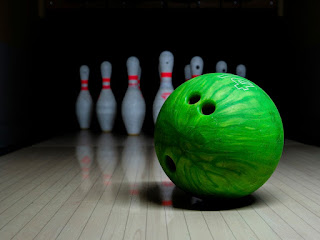Reading the Lanes: Professional bowlers are highly skilled at reading lane conditions. They closely observe their ball's reaction and the pin carry on each shot to assess the current state of the lane. They pay attention to ball motion, entry angle, and the way the pins react to determine whether the lane is hooking too much or not enough.
Changing Equipment: As lane conditions change, professional bowlers often switch to different bowling balls with varying coverstocks and core designs. Some bowlers may opt for more aggressive balls to handle heavy oil patterns, while others might choose more controllable balls for drier lanes. Adapting the equipment allows them to find the best match for the lane conditions.
Adjusting Lines: Based on their observations, professional bowlers make adjustments to their target and break point on the lane. They may move left or right on the approach and alter their angle of attack to find the pocket consistently. These adjustments help them accommodate the lane transition and maintain a strong ball reaction.
Ball Speed and Rev Rate Changes: Altering ball speed and rev rate can significantly influence ball reaction on changing lane conditions. Professional bowlers have the skill to adjust their delivery to generate more or less revolutions on the ball and adjust their ball speed accordingly to match the lane conditions.
Mental Resilience: Handling lane transitions requires mental toughness. Professional bowlers remain focused, patient, and adaptable throughout the tournament. They do not get discouraged by a few errant shots and continue to make smart decisions based on the evolving lane conditions.
Communication with Coaches: Top bowlers often work with coaches who can offer insights and suggestions during the tournament. Coaches can analyze lane conditions and ball reactions, helping bowlers make informed decisions about adjustments and equipment changes.
Overall, successful management of lane transitions is essential for professional bowlers to stay competitive in a tournament. Their ability to read lanes, adjust equipment and techniques, and maintain mental resilience sets them apart as elite performers in the sport.
Photo: Pixabay (free)

No comments:
Post a Comment
Thanks for your comment.